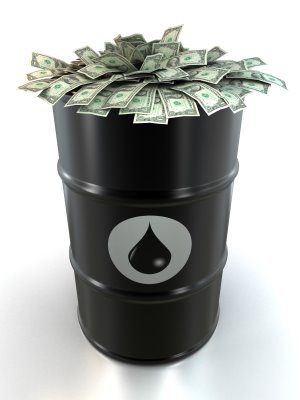Special topics
 The Public Interest and Accountability Committee (PIAC), the body established to monitor the flow and use of petroleum revenues, has questioned the Finance Ministry’s spending of oil revenues in 2012 — worrying that too much went into consumption rather than investment.
The Public Interest and Accountability Committee (PIAC), the body established to monitor the flow and use of petroleum revenues, has questioned the Finance Ministry’s spending of oil revenues in 2012 — worrying that too much went into consumption rather than investment.
The PIAC is also asking the Ministry to account for petroleum income of GH¢111million that was spent on capacity building, one of four priority areas in which oil earnings can be applied.
Its chairman, Major Daniel Ablorh-Quarcoo (rtd.), launching the 2012 Annual Report on the Management of Petroleum Revenues, said the Ministry must also give details of GH¢100million spent on expenditure and amortisation of loans for oil and gas infrastructure.
“We wrote specifically to the Finance Ministry informing them of our observation [and] seeking further explanation. Unfortunately, the Ministry has not responded. Because of time [constraints], we didn’t want to spend all the time waiting as we had already delayed publication of the report,” he said.
“The law (Petroleum Management Revenue Act 815) does not permit them to do too much consumption spending; spending should be on investments. As it stands now, the figures point to the fact that a lot of spending went into consumption,” he added.
The report also said that budgetary allocations of oil revenues in 2012 indicate that the monies were spent on all the 13 areas listed in the law, whereas the legislation requires that not more than four areas are prioritised.
“This defeats the objective of priority-setting meant to achieve optimum impact from government spending oil revenue as defined in Section 21(5) of Act 815. Further, the intended allocation of petroleum revenues to the Office of Government Machinery (GH¢65million), Ministry of Lands and Natural Resources (GH¢33.8million), Ministry of Trade and Industry (GH¢13million) and such similar priorities, if it was actually done, can only promote consumption spending as opposed to investment spending in line with spending objectives defined in the law.”
According to the report, although government projected petroleum revenue of GH¢1.24billion for 2012, the actual revenue was GH¢979.3million. The 21 percent shortfall in the revenue, the report noted, was mainly due to non-receipt of corporate taxes which amounted to GH¢384million.
The Petroleum Revenue Management Act requires that petroleum revenue be distributed to the Ghana National Petroleum Corporation (GNPC), government’s annual budget (Annual Budget Funding Amount), and to the Ghana Petroleum Funds (GPFs) — that is, the Ghana Stabilisation Fund and Ghana Heritage Fund.
The findings of the report indicate that GNPC received GH¢54.99million more than was approved for it in the 2012 budget by Parliament, despite the revenue shortfall.
“This had the effect of shrinking the residual Benchmark Revenue (BR), out of which the Annual Budget Funding Amount and transfers to the Ghana Petroleum Funds were to be funded. Also, the GNPC’s share in respect of equity financing costs and net carried and participating interests exceeded budget by GH¢33.6million representing 17.6% and GH¢21.38 million representing 12.9% respectively,” the report said.
Although GNPC has provided PIAC with a detailed report on how its share of the 2012 revenue was spent, the revenue watchdog said at the end of the year about 26.6% (US$61.6million) of those funds were carried as cash-in-hand and committed to projects listed to be undertaken in 2013.
PIAC said in the distribution of petroleum revenue, the Ministry of Finance must be guided by the policy objectives underlying the revenue law — setting aside some of the petroleum revenues into a fund for future use.
“The current distribution mechanism based on the Act appears to leave too much funds at the disposal of the national oil company, at the expense of the ABFA and GPFs. This is a lingering problem as it appeared as [a] finding in the report of the PIAC for year 2011.”
Last year, actual transfers to the Ghana Petroleum Fund fell short of target by 82%. Out of the GH¢263.38million budgeted for the funds, only GH¢45.6million was released to it.
The investment of the funds has not yielded high returns, a situation PIAC described as worrisome — adding that a continuation of the trend is likely to slow growth of the funds, especially the Heritage Fund.
Source: B&FT
Get the latest news and updates on Ghana’s oil and gas value chain by following us Reporting Oil and Gas on twitter @oilgasghana and like our facebook page and get at us on Google+. Subscribe to our group to get update